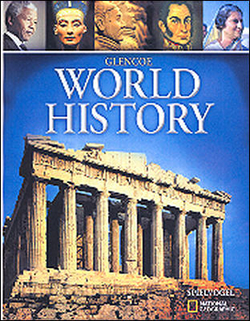Glencoe World History © 2010Chapter 31:
Asia and the PacificChapter OverviewsMao and the Communists took control of China and turned it into a military power. India split into three countries—India, Pakistan, and Bangladesh. Japan and the "Asian Tigers" became economic powerhouses. Australia and New Zealand have drawn closer to Asia. Section 1 Communist China
Chinese Communists defeated the Nationalists in 1949, and Chiang Kai-shek and his supporters fled to Taiwan to set up their own government. Under Mao Zedong's disastrous Great Leap Forward program, vast communes were formed to boost farm production. Instead, millions of people starved. During the Proletarian Cultural Revolution, Mao tried to wipe out old ways and ideas. Reformers, led by Deng Xiaoping, seized power after Mao's death, ended the revolution, and turned to modernization. Fears of Communist expansion led to the Korean War, in which Chinese troops and United Nations troops (mainly American) clashed. At the end of war Korea was divided and remains so today. Growing discontentment with Chinese Communist rule has created pockets of dissent in recent years, while Western nations have worried over China's military strength. By the early 2000s, China was strengthening its trade relations. Section 2 South and Southeast Asia
After World War II, India was divided into Hindu India and Muslim Pakistan. India experienced an industrial boom, but population growth, poverty, and ethnic tensions have remained problems. After a brief civil war in 1971, East Pakistan became the state of Bangladesh. Both Pakistan and Bangladesh have remained poor and politically unstable. Conflict between India and Pakistan escalated to threats of war in 2002. Southeast Asian colonies gradually gained independence. Indonesia gained independence in 1948. The people of Myanmar continue to fight for democracy. France reluctantly allowed the creation of a Communist North Vietnam and a non-Communist South Vietnam. After French withdrawal, American troops were involved in a protracted war. After the United States withdrew, the Communists unified Vietnam. Communists took power in Laos and Cambodia, but U.S. fears of "falling dominoes" were not realized. A popular uprising in the Philippines overthrew corrupt president Ferdinand Marcos. Section 3 Japan and the Pacific
An American occupying force remodeled many aspects of Japanese society along Western lines to discourage a resurgence of Japanese militarism. The newly democratic Japan emerged as a giant economic power. The "Asian Tigers"—South Korea, Taiwan, Singapore, and Hong Kong—have also been economic success stories. Authoritarian rule has given way to democracy in all but Singapore. Taiwan is home to the Republic of China, founded by Chiang Kai-shek after the Communist victory in mainland China. The People's Republic of China claims Taiwan while Taiwan remains independent. Australia and New Zealand have long identified themselves with Europe. Both are military allies of the United States. However, recent trends in trade and immigration have drawn them closer to Asia.  | 
















